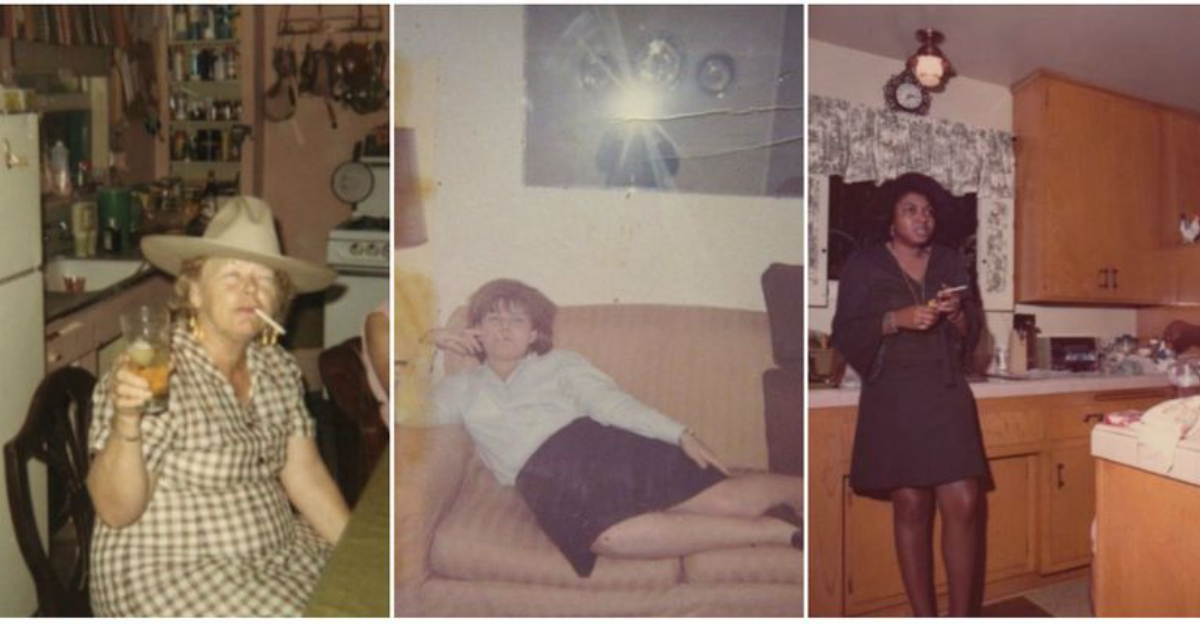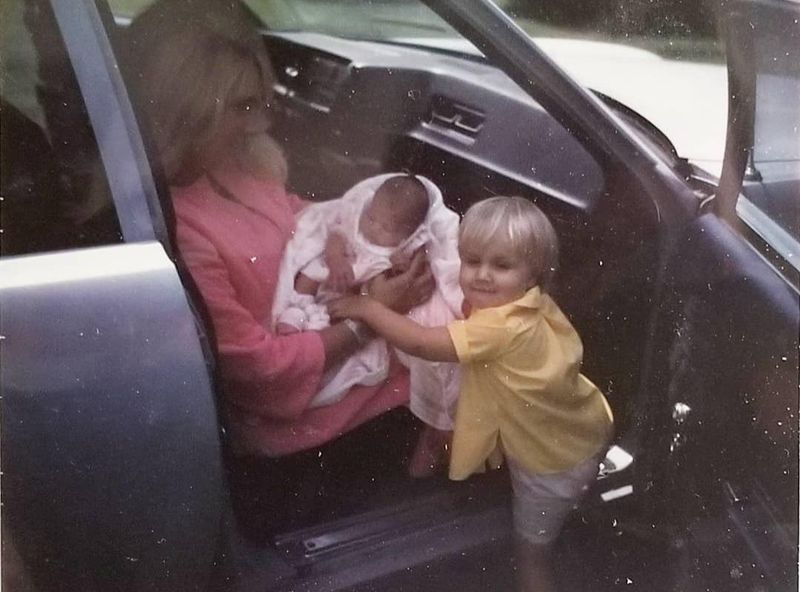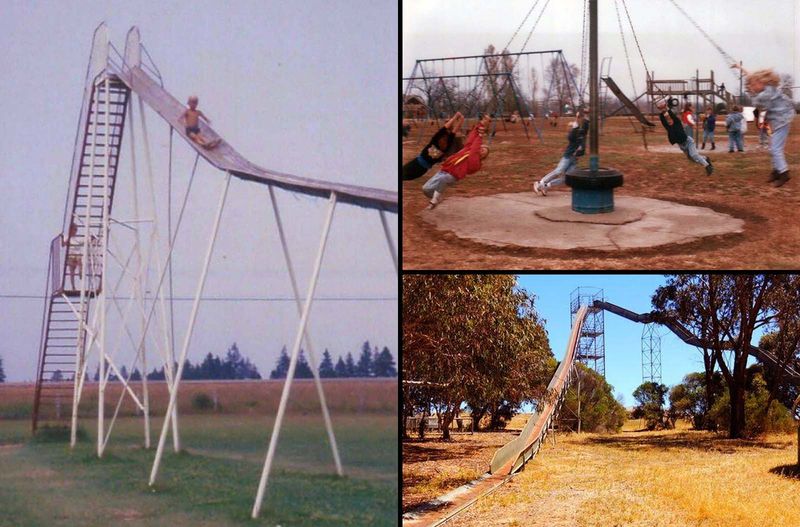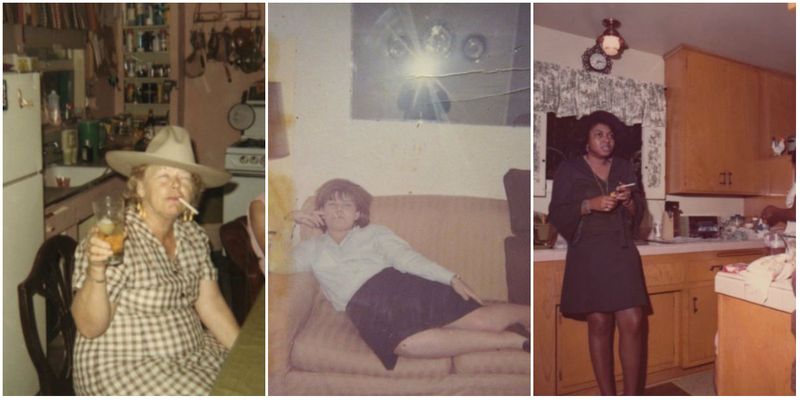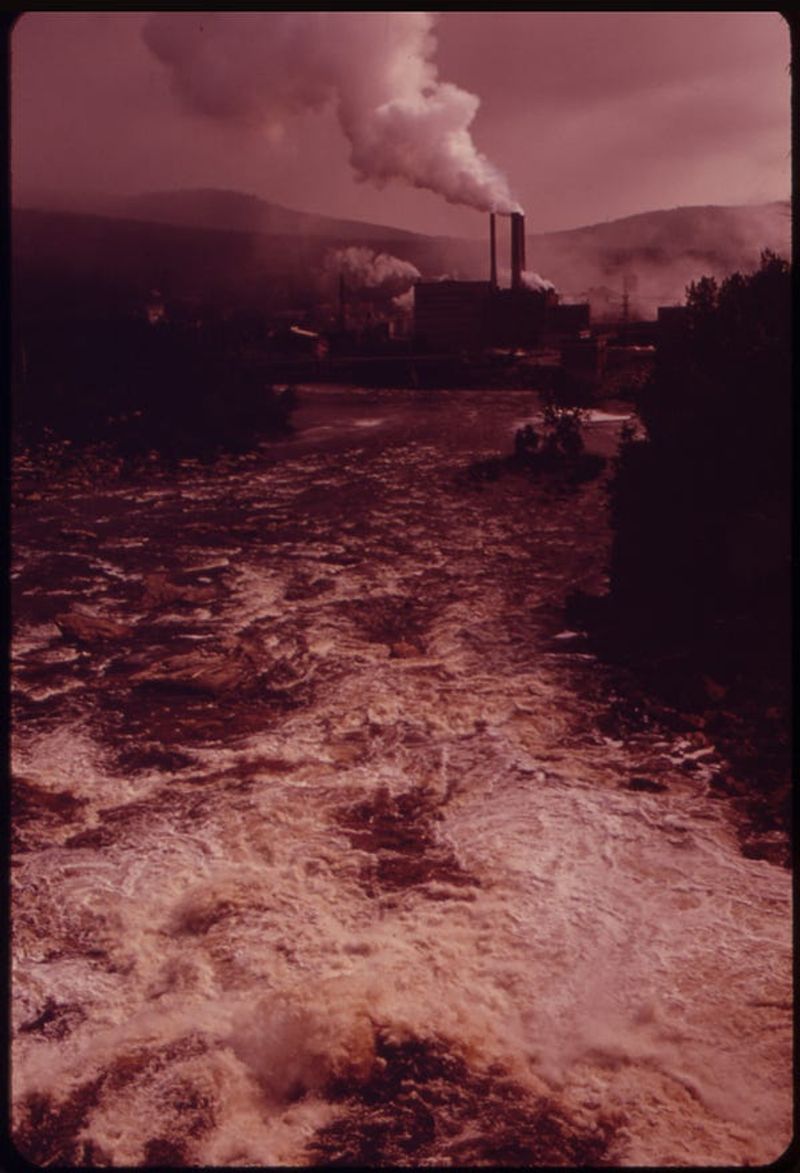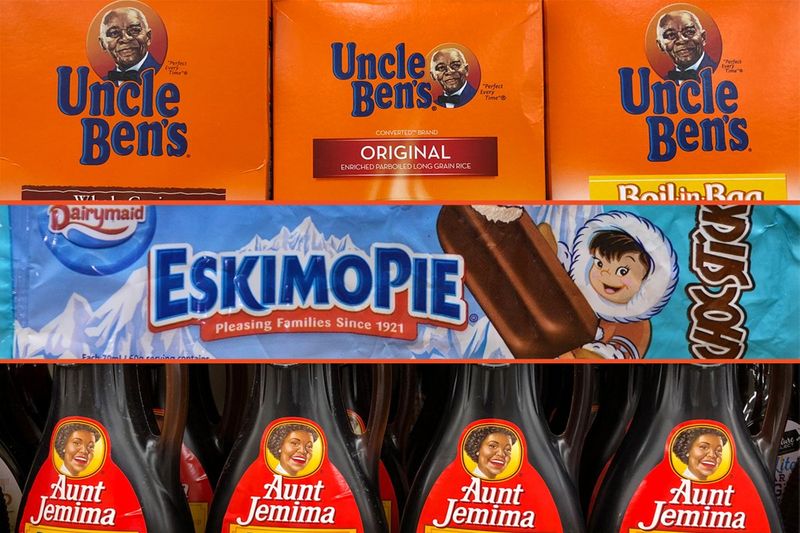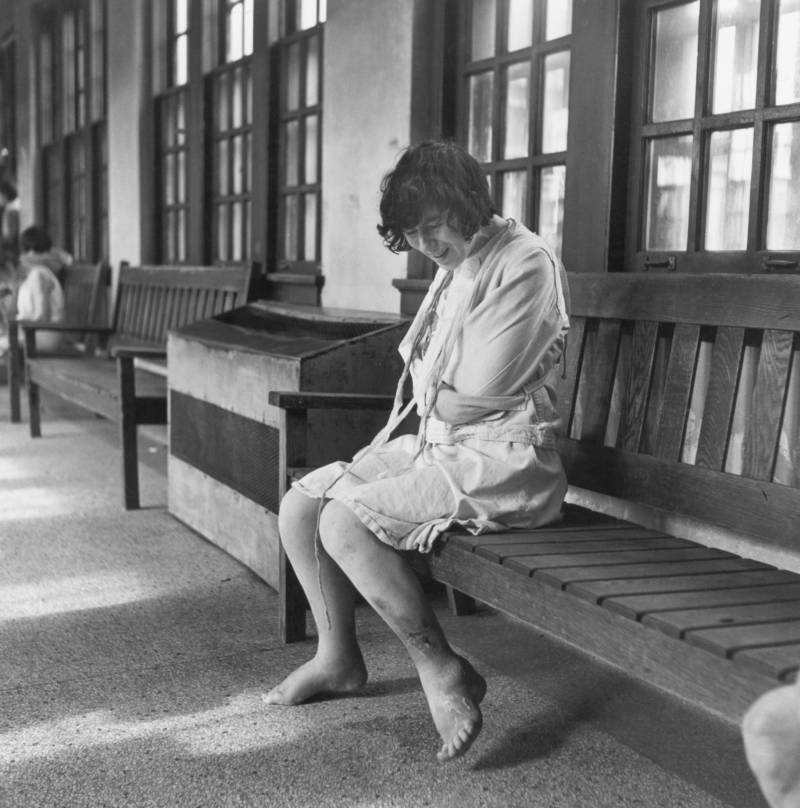The 1970s were wild times with their own set of rules and social norms. Bell-bottom jeans, disco music, and fondue parties weren’t the only things that made this decade unique. Many everyday behaviors and products from this groovy era would raise serious eyebrows or even legal issues in our modern world. Take a nostalgic yet eye-opening trip back to see just how much times have changed!
1. Car Seat Safety? What’s That?
Babies bounced freely on mom’s lap in the front seat. Toddlers stood on the back seats peering over dad’s shoulder. Station wagons became playgrounds with kids rolling around in the “way back” during family road trips.
Car seats, when used at all, resembled plastic buckets with flimsy straps. Many families didn’t own them. Some states had no seat belt laws whatsoever, making click-it-or-ticket campaigns nonexistent. The family dog often had more restraint than the children as cars cruised down highways at 65 mph.
2. Playground Equipment of Doom
Towering metal slides baked in the summer sun until they could practically sear a child’s legs. No safety surfacing existed – just hard-packed dirt or concrete waiting below. The merry-go-round spun at dizzying speeds as children clung desperately to its metal bars.
Jungle gyms stood 10 feet tall with no nets or protective barriers. The see-saw launched unsuspecting children skyward when a friend suddenly jumped off. Parents watched from afar, calling out “walk it off” when inevitable injuries occurred. These play spaces would trigger immediate lawsuits today.
3. Hitchhiking as Transportation
Thumb out, backpack ready – hitchhiking wasn’t just for hippies and college students. It was a legitimate way to get around town. People regularly picked up strangers without a second thought about personal safety.
Young women hitchhiked alone between cities. Parents allowed teenagers to thumb rides to school or weekend activities. Even children sometimes hitched short rides around neighborhoods. Highways featured unofficial “hitchhiker stations” where groups gathered waiting for rides. This casual attitude toward getting in cars with strangers would horrify today’s safety-conscious parents.
4. Smoking Everywhere Was Normal
Cigarettes dangled from lips in grocery stores, movie theaters, and even hospital waiting rooms. Nobody batted an eye when someone lit up on an airplane or during a college lecture. The hazy cloud of smoke was just part of the atmosphere.
Restaurant ashtrays sat on every table like salt and pepper shakers. Children could legally purchase cigarettes for their parents with just a handwritten note. The dangers of secondhand smoke weren’t widely recognized, and smoking was portrayed as sophisticated and cool in advertisements everywhere.
5. Drinking and Driving Was Barely Frowned Upon
The open container in the cup holder wasn’t coffee – it was beer! Drivers casually sipped alcoholic beverages while cruising down highways. “One for the road” wasn’t just an expression; it was a literal farewell drink before driving home.
Blood alcohol limits were much higher than today’s standards, if enforced at all. Many police officers simply told intoxicated drivers to “go straight home” rather than arresting them. Drive-through daiquiri shops operated legally in some states. The cultural attitude treated drunk driving as a minor indiscretion rather than the potentially deadly choice we recognize today.
6. Kids Roamed Free Until Dark
Morning cartoons ended, screen doors slammed, and children vanished into neighborhoods until dinner time. Nobody knew exactly where they were for hours. Parents expected kids home “when the street lights came on” – the universal signal that playtime was over.
Eight-year-olds rode bikes miles from home without cell phones or tracking devices. Children explored construction sites, abandoned buildings, and forests unsupervised. Neighborhood kids formed impromptu gangs that roamed freely between yards and public spaces. This independent childhood would trigger CPS investigations in many modern communities where supervised playdates have replaced spontaneous adventure.
7. Offensive TV Shows Were Prime Time Hits
“All in the Family” featured Archie Bunker spewing racist comments while audiences roared with laughter. Stereotypes about minorities, women, and LGBTQ+ individuals formed the backbone of popular sitcoms. Laugh tracks encouraged viewers to find prejudice amusing.
Sexual harassment was portrayed as harmless workplace banter. Characters with disabilities became punchlines rather than people. Even children’s cartoons contained stereotypes that would never clear today’s standards. These shows weren’t underground content – they were mainstream entertainment watched by millions of families during dinner time, reflecting and reinforcing cultural attitudes that we now recognize as harmful.
8. Physical Punishment in Schools
The wooden paddle hung prominently in the principal’s office, not as decoration but as a frequently used disciplinary tool. Teachers struck knuckles with rulers for minor infractions like talking out of turn. Students bent over desks for public paddling while classmates watched.
Parents signed permission slips authorizing schools to physically discipline their children. Getting “swats” was a normal part of the school experience for misbehavior. Some teachers kept yardsticks specifically for rapping students’ legs. The psychological impact of such punishment wasn’t considered – only its effectiveness at maintaining order in overcrowded classrooms.
9. Dangerous Toys Without Warning Labels
Chemistry sets contained actual radioactive materials and dangerous chemicals that could explode or cause burns. Lawn darts – heavy metal spikes thrown into the air – caused numerous injuries and deaths. Children received BB guns and pocket knives as birthday presents for elementary-aged kids.
Toy manufacturers didn’t test for choking hazards or toxic materials. Playgrounds featured sharp metal edges and moving parts that trapped fingers. The original Easy-Bake Oven reached temperatures hot enough to cause serious burns. Parents accepted these risks as normal childhood dangers, with the attitude that kids would “learn to be careful” through experience.
10. Pregnant Women Smoking and Drinking
Doctors rarely advised pregnant women to quit smoking. Some even suggested that smoking would make labor easier by producing smaller babies! Cigarette ads specifically targeted expectant mothers, promising to calm their nerves.
Alcohol consumption during pregnancy wasn’t just accepted – it was sometimes encouraged. Some obstetricians recommended beer to nursing mothers to increase milk production. Cocktail hours continued uninterrupted through all three trimesters. The devastating effects of fetal alcohol syndrome weren’t widely recognized until the late 1970s, meaning an entire generation developed with these preventable exposures.
11. Asbestos and Lead Were Everywhere
Asbestos insulated homes, schools, and office buildings. People handled this carcinogenic material without gloves or masks. Children’s classrooms featured asbestos ceiling tiles that flaked dangerous fibers onto desks below.
Lead paint brightened walls in nurseries and kindergartens. Water pipes contained lead that leached into drinking supplies. Gasoline released lead particles into the air everyone breathed. Even toys and dishes contained these toxic substances. The health consequences would take decades to fully emerge, but the exposure was happening daily in nearly every American household.
12. Gender-Segregated Help Wanted Ads
Newspaper classified sections explicitly divided job listings by gender. “Help Wanted – Women” featured secretarial and nursing positions, while “Help Wanted – Men” listed management and technical roles. This wasn’t subtle discrimination – it was openly printed policy.
Job advertisements specified appearance requirements for female applicants. Airlines only hired young, attractive women as flight attendants who could be fired for gaining weight or getting married. Banks required manager approval for women to open credit card accounts without their husbands’ signatures. These practices weren’t just social norms – they were legal business policies that shaped economic opportunities.
13. Environmental Destruction as Progress
Factory smokestacks belched black clouds proudly – they symbolized industrial success, not pollution concerns. Rivers ran with multicolored chemical waste from manufacturing plants. Some waterways actually caught fire from the concentration of flammable pollutants.
Cars guzzled leaded gasoline with no emissions controls. People routinely tossed trash from car windows onto highways. Backyard burning of household garbage created toxic smoke throughout neighborhoods. The concept of recycling barely existed in mainstream America. These environmental practices weren’t hidden – they were celebrated as signs of economic growth and convenience.
14. Casual Racism in Everyday Conversation
Racial slurs appeared in casual conversation, children’s rhymes, and even company names. People openly used derogatory terms for different ethnic groups without social consequences. Racist jokes were standard fare at family gatherings and workplace break rooms.
Housing discrimination occurred through redlining practices that prevented minorities from moving into certain neighborhoods. Job applications often required photographs to screen candidates by race. Schools remained effectively segregated in many regions despite legal integration. This casual racism wasn’t limited to certain regions or demographics – it permeated mainstream American culture from television to textbooks.
15. Mental Health Issues Were Hidden Away
Families kept relatives with mental illness out of sight, sometimes in institutions with horrific conditions. Depression was dismissed as “having the blues” with advice to simply “cheer up.” Anxiety disorders were labeled as “nervousness” requiring people to “toughen up.”
Workplace stress led to self-medication with alcohol and cigarettes rather than therapy. Children with learning disabilities or ADHD were labeled as “problem kids” or “slow learners.” Therapy carried such stigma that people traveled to different towns to visit psychiatrists. Mental health challenges were viewed as character flaws or family embarrassments rather than medical conditions requiring compassionate treatment.
